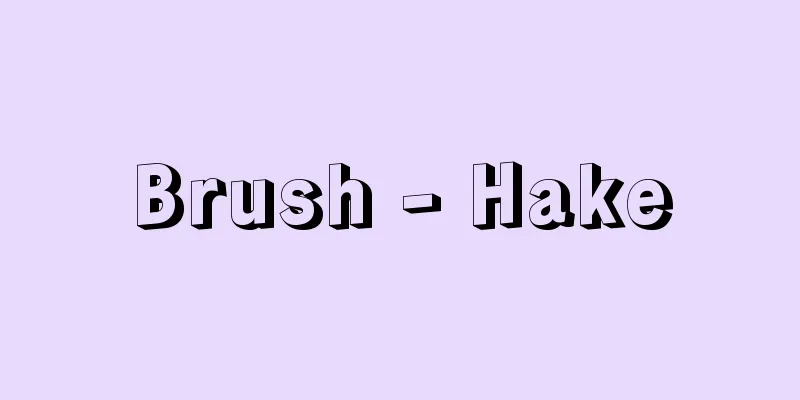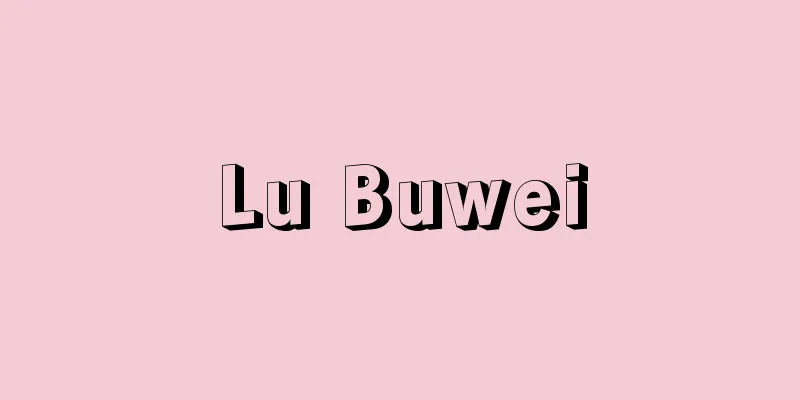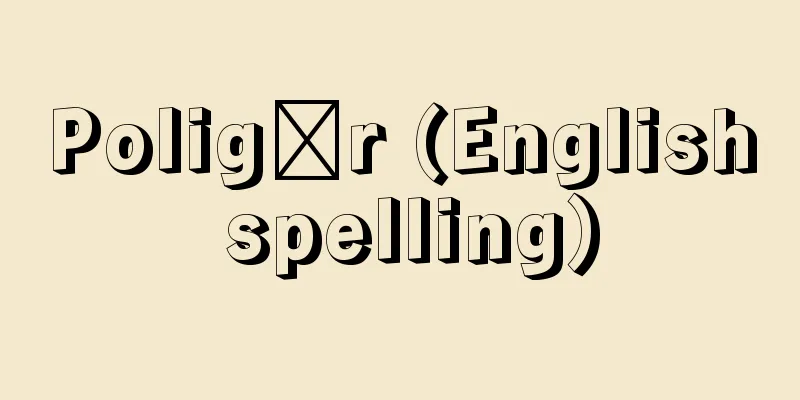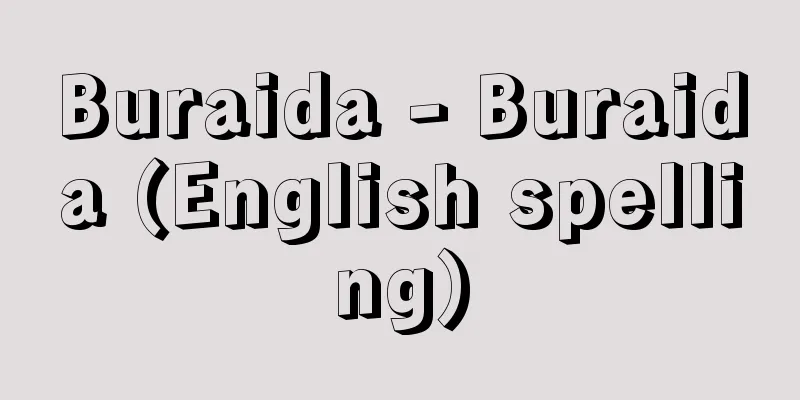Brush - Hake

|
Hair from animals such as wild boars, raccoon dogs, and horses, plant fibers, wire, and synthetic resins are bundled together and attached to a wooden or bamboo handle, with the ends trimmed. They are used to apply lacquer, glue, paint, and cosmetics. Currently, brushes with soft, long bristles are generally called brushes, while foreign brushes with stiff, short bristles are called brushes. Brushes seem to have originally evolved from calligraphy brushes, and in the past, several brushes bundled together were used to cover paper on folding screens and sliding doors. In the Edo period, brush making became a specialized profession, brush makers were established, and each craftsman developed their own secret techniques. The method of making brushes is usually to align the bristles so that they are even, wrap the paper around the base, make a thin slit at the tip of the brush plate, and tighten it with thin hemp twisted thread. There were many types of brushes, including Kyoji brushes for making folding screens and sliding doors, dyeing brushes for dyeing textiles, doll brushes for making dolls, lacquer brushes for lacquering, woodblock brushes for making woodblock prints, etc. Meanwhile, in the Meiji period, various brushes were imported, and today, brushes ranging from small toothbrushes to large industrial cleaning and washing brushes are being made, and traditional Edo brushes are gradually falling out of use. [Mizuo Miyamoto] Source: Shogakukan Encyclopedia Nipponica About Encyclopedia Nipponica Information | Legend |
|
イノシシ・タヌキ・ウマなどの獣毛、植物繊維・針金・合成樹脂などの毛を束ねて、木・竹製の柄(え)に植え付け、その端を切りそろえたもの。漆、糊(のり)、絵の具、化粧品などを塗るのに用いる。現在は、一般に在来の毛が柔らかく長いものを刷毛とよび、外来の毛が堅く短いものをブラシbrushとよんでいる。刷毛はもともと毛筆から変化したものらしく、古くは屏風(びょうぶ)、襖(ふすま)など紙を上張りするのに筆を数本束ねたものが刷毛として用いられた。江戸時代になると、刷毛つくりも専業化し、刷毛屋ができ、各自家伝の秘法を生むに至った。その製法は、普通、凹凸のないように毛をそろえ、紙を元巻きにし、刷毛板の先端に細い割りを入れ、麻の細い撚糸(よりいと)で締めてつくった。刷毛の種類は多く、屏風・襖製作用の経師(きょうじ)刷毛、織物の染色用の染色刷毛、人形製作用の人形刷毛、漆塗り用の漆刷毛、木版画製作用の木版刷毛など各種あった。一方、明治時代になって、各種のブラシが輸入され、現在では、小は歯ブラシから、大は工業用の掃除・洗浄用ブラシまでつくられるようになり、伝統的な江戸刷毛は、しだいに廃れつつある。 [宮本瑞夫] 出典 小学館 日本大百科全書(ニッポニカ)日本大百科全書(ニッポニカ)について 情報 | 凡例 |
>>: Paihuawen Movement (English: Paihuawen Movement)
Recommend
Zēthos (English spelling)
…The Acropolis of Thebes was called Kadmeia after...
Kadoiwashi - Kadoiwashi
…A migratory fish of the polar zone that is widel...
Cow Market
〘Noun〙 A market for trading and buying cattle. In ...
Aburame (Aburahaya) - Aburame
...The name probably comes from the fact that the...
Gyroscope
A type of top whose axis can rotate freely around ...
Kanryosen - Kanryosen
...It refers to the rice and money collected by k...
Tsuchiura [city] - Tsuchiura
A city in the southern part of Ibaraki Prefecture....
Long-eared hedgehog - Long-eared hedgehog
...Their entire body, except for their face, unde...
Illyrian Party
...But the nationalistic literary movement develo...
Sir John Richard Hicks
British theoretical economist. Born in Leamington...
Jumping seed
...Three seeds form a cluster, and each seed has ...
Alexander von Humboldt
Born: September 14, 1769 in Berlin Died May 6, 185...
Actor Review - Yakushahyobanki
Kabuki drama book. From the early Edo period to t...
Le bonheur (English spelling)
…His first collection of poems, Stances et poèmes...
Kohata
A place name in the northern part of Uji City, Kyo...









